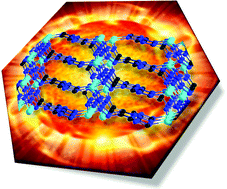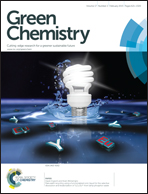Environmentally friendly high-energy MOFs: crystal structures, thermostability, insensitivity and remarkable detonation performances†
Abstract
An alternative method to prepare new-generation green high-energy-density materials with excellent performances has been developed on the basis of a coordination chemistry strategy. In the present work, hydrothermal reaction of Cu(II)/Cu(I) with a rigid nitrogen-rich ligand, 3-(1H-tetrazol-5-yl)-1H-triazole (H2tztr), led to three high-energy metal–organic frameworks (MOFs): [Cu(Htztr)2(H2O)2]n (1), {[Cu(tztr)]·H2O}n (2) and [Cu(Htztr)]n (3). Referring to the coordination geometry configuration of Cu(II)/Cu(I) and flexible coordination fashion of the ligand, the energies of the complexes 1–3 are gradually improved when they are structurally transformed from 1, a mononuclear structure to 2, a 3D porous MOF incorporated with guest water molecules to 3, a well-isolated layer structure. The title complexes show outstanding thermostability (Tdec = 345 °C for 1, 325 °C for 2 and 355 °C for 3) and low sensitivity, confirmed by experimental and theoretical characterization. Notably, complex 3 features superior detonation properties to that of known energetic MOFs.


 Please wait while we load your content...
Please wait while we load your content...